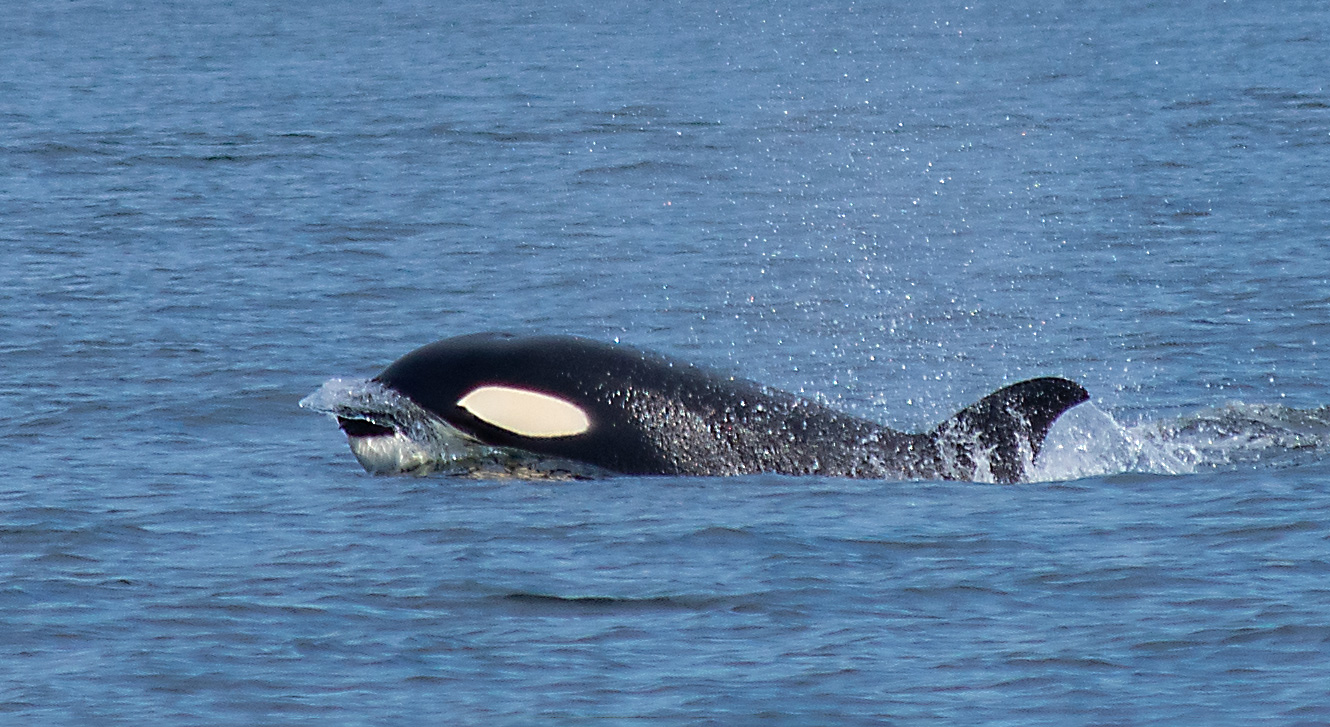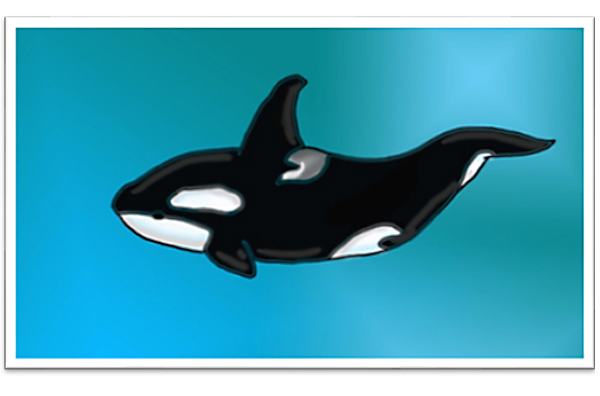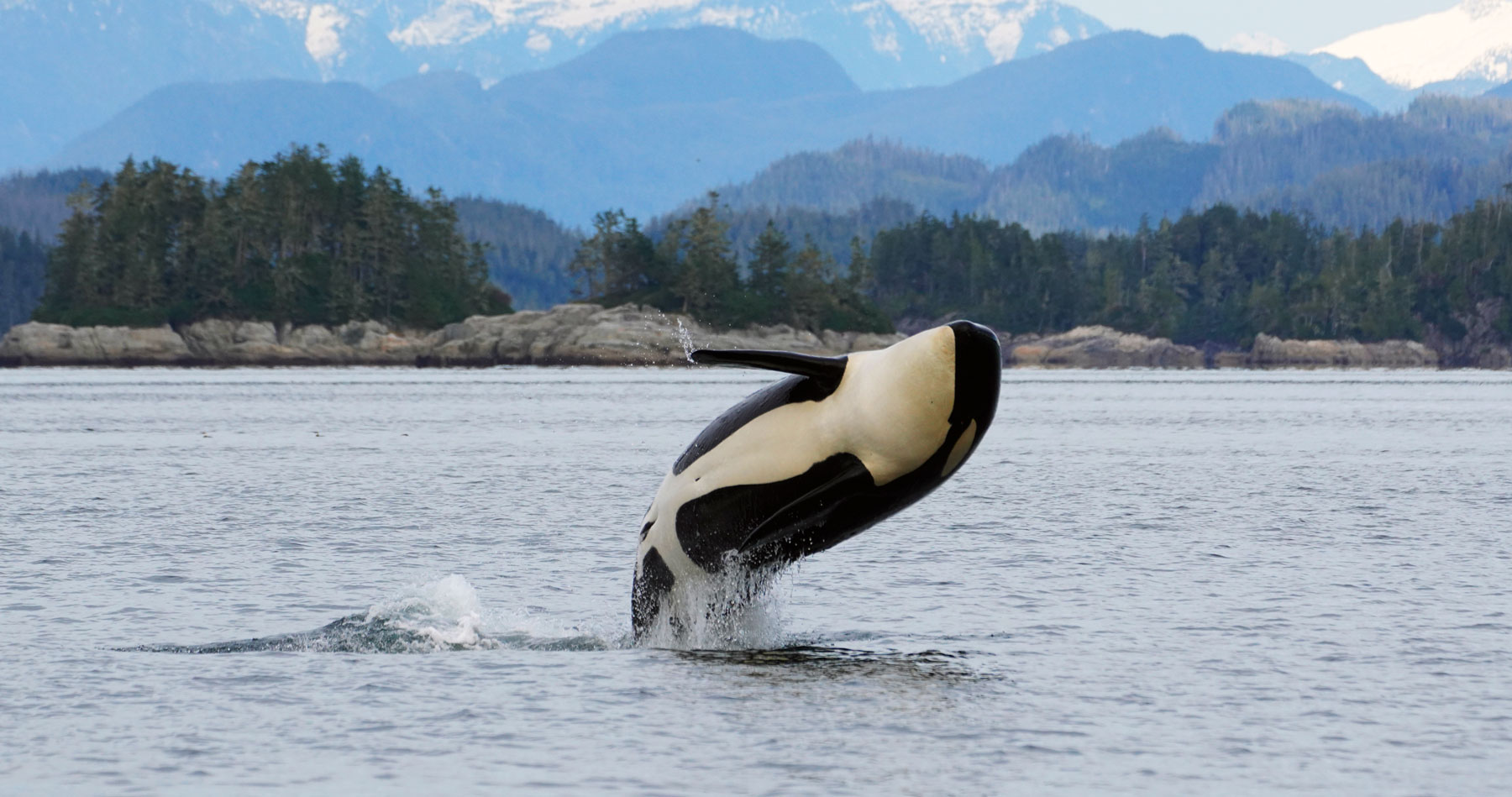Author: Allie Graff
Photo: Thank you to Jared Towers for the use of his photo
Common Names: Orca, Killer Whale
Scientific name: Orcinus orca
Size range: 7 to 9.7m long, (23 – 32 ft). Can weigh up to 7257 kg.
Identifying features: Orcas are easily identified by their distinct black and white markings. They are the largest members of the Delphinidae family, also known as the ‘oceanic dolphins’. They also have a noticeably large dorsal fin – the dorsal fin of males is larger than in females. They are “toothed whales”, and their teeth can be up to 10 cm long.

A calf of a transient killer whale that was taken off of Sidney Spit, British Columbia. It was travelling with two pods at the time identified as TO34 and TO37 (D. Young).
Habitat: Orcas are one of the most widespread mammals on the planet and are found in every ocean, from the polar regions all the way down to the equator. In some cases, orcas have been found in tropical waters and (even rarer) in freshwater rivers! Despite this, they will always be iconic to Canada.
Prey: Orcas have been noted to hunt in a similar manner to wolf packs, using an effective cooperative method, which has given them the title of “Wolves of the Sea”. Around Vancouver Island in British Columbia there are three distinct groups of Orcas each with their own unique language and food preference. The resident killer whales prefer to eat fish, specifically Chinook Salmon, but they will eat other species such as coho. The transient killer whales prefer a diet of mammals and it includes seals and sea lions, such as the harbour seal (Phoca vitulina). The offshore killer whales prefer a diet which includes sharks, and as a result their teeth are often worn flat. The diet of killer whales globally is diverse and may include squid, fish, and mammals. In one extreme case, a pair of killer whales took down a whale shark (Rhincodon typus), which was 26 ft. long!
Predators: Orcas are apex predators and have few natural enemies, as they are very large and are usually found in huge groups. They have never been extensively hunted by humans, and no one has ever been killed by a wild orca whale. Most of the time, the whales mistake humans in the water for seals. In 2011, the film crew for the BBC documentary Frozen Planet had an encounter with whales; they were apparently trying to “wave wash” the crew’s zodiac. However, in captivity, the attacks are more common and unfortunately have yielded death.
Life Cycle: Female orcas can live an average of 50 years in the wild but can reach at least 90 years old. The males in the wild live an average of only 30 years, but may reach at least 60 years. They give birth to new calves every 3-10 years, and pregnancy lasts 17 months.
Illustration by Allie Graff

References
MarineBio Conservation Society (1998-2012) Orcas, Killer Whales (Orcinus orca). Retrieved 2:35, April 14, 2012, from http://marinebio.org/species.asp?id=84
National Geographic Society (1996-2012) Killer Whale (Orca) (Orcinus orca) Retrieved 5:57, April 16, 2012, from http://animals.nationalgeographic.com/animals/mammals/killer-whale/?source=A-to-Z
The IUCN Red List of Threatened Species (2012, May 15) Retrieved 2:13, April 16, 2012, from http://www.iucnredlist.org/apps/redlist/details/15421/0
Harbo, R.M. (1999) Whelks to Whales: Coastal Marine Life of the Pacific Northwest B.C., Canada: Harbour Publishing

